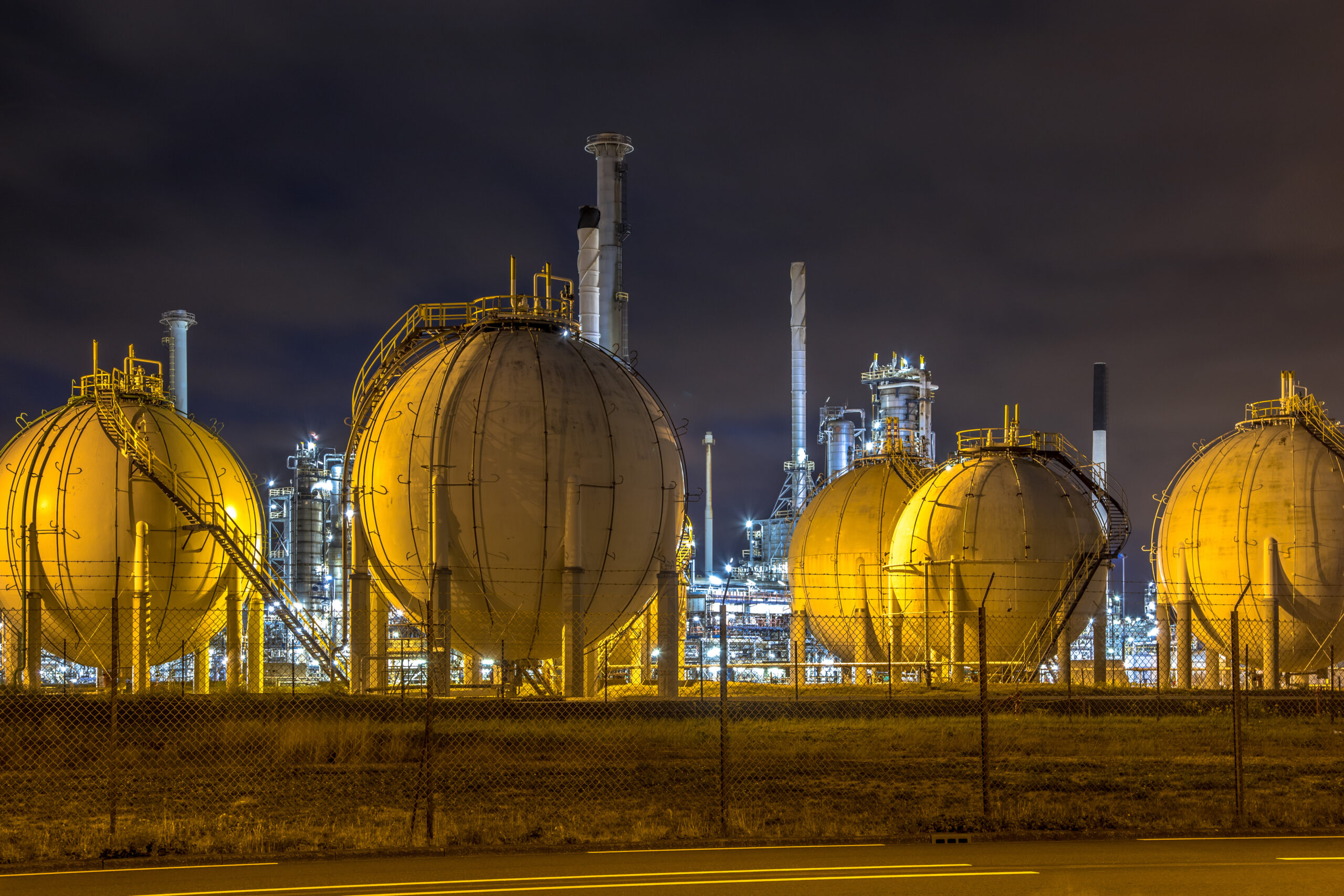Gas prices spike despite record high European gas storage
In spite of record high European gas storage levels, the continent is vulnerable to risky global LNG dynamics as winter approaches.

Despite record high European gas storage levels, recent spikes in natural gas prices have exposed Europe’s vulnerability to global dynamics as reliance on LNG increased over the past year, and as the continent braces for a challenging winter amid risks of a curtailment in Russian flows and extremely cold weather.
European storage levels were more than 91% full on August 22, according to Gas Infrastructure Europe (GIE) data, showing a much healthier picture compared to last year in the same period (78%), and well ahead of the EU-mandated 90% by November 1st target.
However, threats of strikes at Australian LNG export facilities led to a sharp rise in prices in mid-August, with the front-month Dutch TTF September contract rising to around €45/MWh on the ICE exchange after it had been at €25/MWh levels earlier in the summer, to then retrace to around €35/MWh.
While the bullish turn has eased, it also showed how the continent’s increased reliance on LNG following Russia’s invasion of Ukraine is exposing it to higher price volatility.
“Generally speaking, we believe that Europe can cope well with an average winter 2023/24,” Tobias Kistner, a spokesman for Swiss-based energy company MET Group, told Gas Outlook.
“The overall situation is much better than last year in late summer” and the “availability of pipeline gas and LNG is high, and countries such as Germany made considerable investment to expand the import infrastructure.”
“This can be seen as economic insurance,” he said.
“However, there are always uncertainties and therefore it can never be ruled out that the situation may deteriorate after all.”
“Even a small imbalance in the system, such as an unforeseen infrastructure failure or an event such as the current strike in Australia, can result in sharp fluctuations in prices going forward and Europe needs to get ready to cope with this situation.”
“If this year’s winter is extremely cold, there could be a nasty surprise, especially if Asia also returns to the market as a major consumer at the same time, then we could even experience a price shock” he continued.
“The question is whether China’s comeback will happen soon…for the time being, this does not seem to be the case.”
LNG vulnerable to global events
In the UK, where a consumer energy price cap is still in place “predictions for 2024 show prices continuing to languish well above pre-pandemic prices – something which is currently forecast to remain the case for the remainder of the decade,” Craig Lowrey, principal consultant at Cornwall Insight, said.
“The recent impact of the potential industrial action at Australian liquified natural gas (LNG) production facilities on wholesale energy prices across Europe, underscores the vulnerability of the country’s energy system to global events.”
“While both the threat of Australian strikes and the impact of Russia’s invasion of Ukraine on energy prices have subsided for now, both highlight the risks such events pose to customer’s bills.”
“There are nervous reactions in the European gas wholesale markets to all news limiting LNG availability like a possible strike in Australia that might affect LNG availability and thus LNG prices,” Christoph Merkel, of German-based consultancy Merkel Energy, told Gas Outlook.
“In principle, Europe and Germany are well prepared for the next winter, since storages are full early ahead of winter season, gas demand, especially in industry, is strongly curtailed, additional LNG infrastructure is in place or progressing.”
However “there are some additional uncertainties in the market like (risk of) curtailment of Russian gas supplies to Austria, Italy and Eastern Europe via Ukrainian transit before end 2024.”
A further risk “however unlikely due to climate change, is a possible harsh winter with extremely high gas demand and unpredictable gas demand for power generation” which could put Europe’s supply balance under strain.
Ukraine storage risks
Meanwhile, European gas traders have been increasingly relying on Ukraine’s gas storage facilities in recent weeks, despite the risks, in a bid to take advantage of lower summer gas prices and as European storage levels are already reaching maximum capacity.
Ukraine has around 100 TWh of storage capacity available to foreign companies, according to analysis by Bruegel.
However, pipeline routes from Slovakia, Poland, Hungary and Romania could bring a maximum of 17-20 TWh per month into Ukraine from the EU, it said. In addition to that, EU countries could rely on ‘virtual reverse flows’, that is virtually sending gas – all of which is of Russian origin – back to Ukraine that was intended to transit into their systems.
“The Ukrainian market offers storage at a fixed cost rate, which makes gas storage in Ukraine a very attractive and competitive option,” a spokesperson for Swiss-based energy trader Axpo, told Gas Outlook.
“Together with floating LNG storage, it adds to the flexibility needed to cope with the EU storage draw from last winter’s warm weather and low demand, and has been necessary to the extent that it will prevent more excessive volatility in prices.”
“Since the start of the war, however, the risk of storing gas in Ukraine has increased exponentially.”
“The risks connected to storing gas in Ukraine are mainly twofold: first, the risk of infrastructure being damaged or destroyed and, second, not being able to withdraw the gas when this is needed,” he added.



